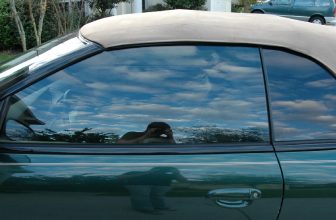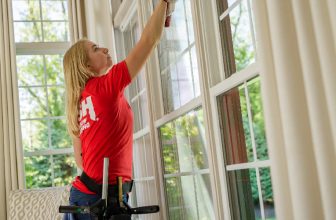How to Cover a Broken Car Window with Plastic Wrap
Fret not! A broken car window does not have to leave you feeling defeated. Securing your vehicle can be made easy with a few simple steps. In this blog post, we will give you all the information that you need to know on how to cover a broken car window with plastic wrap in no time.

This cost-effective solution is quick, requires minimal effort, and is a great temporary fix until you have proper repairs completed. Read ahead for an easy way to secure your vehicle from unwanted intruders or windy weather conditions.
What Kind of Plastic Do do You Use for a Broken Window?
When covering a broken car window with plastic wrap, it is important to use the right kind of plastic. You want to make sure the plastic you are using is strong enough to cover the entire window and prevent wind, rain, snow, or any other weather element from coming in. It also needs to be transparent so that you can still see out the window.
One of the best options for covering a broken car window is shrink wrap. This is the same plastic used to package food and other items, and it comes on a large roll that you can cut to fit your window size. Shrink wrap has excellent transparency and strength, so it should be able to provide enough protection against the elements. You will also need a heat gun or hair dryer to shrink the plastic and make it fit the window perfectly.
Another option is clear vinyl, which is often used for upholstery, outdoor furniture covers, or tarps. Clear vinyl has excellent transparency, so you can still see out of your window when using this type of plastic. It is also tougher than shrink wrap and can provide more protection against rain, snow, or strong winds. However, it can be difficult to secure on the window frame, and there may be a higher risk of tearing.
10 Methods How to Cover a Broken Car Window with Plastic Wrap
1. Cover the Entire Broken Area with Plastic Wrap:
Using scissors or a box cutter, cut a piece of plastic wrap that is large enough to cover the entire broken area of your car window. Make sure there are no gaps between the edges and the window frame. If necessary, you can use tape to secure the edges. make sure there are no wrinkles or air bubbles.
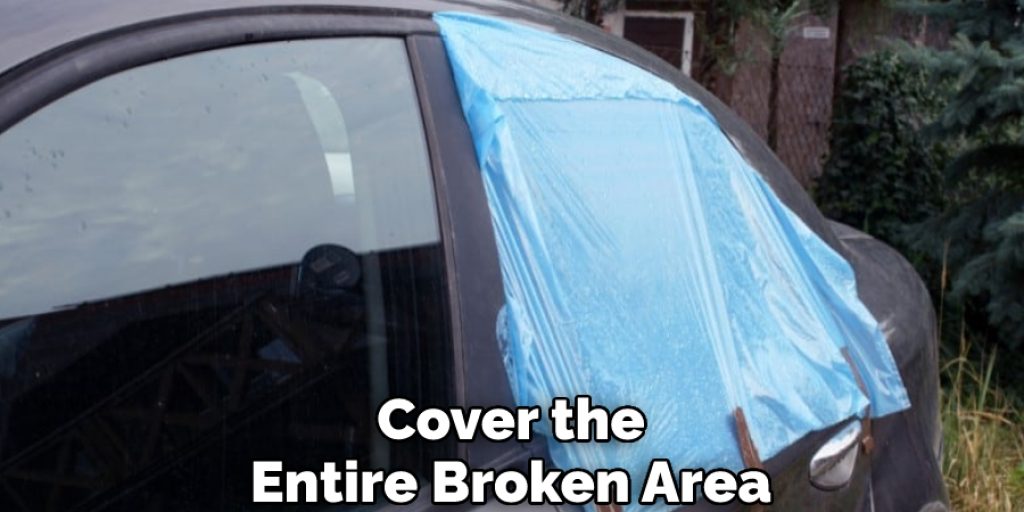
2. Use Tape to Secure it in Place:
Once you have the patch of plastic wrap covering the broken part of your car window, use adhesive tape to secure it in place. This will ensure that the plastic wrap does not come off when you are driving. You can use duct tape, masking tape, or any other kind of adhesive tape that you have on hand.
Make sure to apply the tape around the edges of the plastic wrap patch to ensure it stays in place. Once you’ve applied the tape, make sure that all of the edges are firmly secured to the window frame. This will help keep the plastic wrap patch in place and reduce any air leakage that may occur.
3. Add Extra Layers of Tape:
If necessary, add extra layers of tape to ensure the patch is completely secure. Make sure that the tape is applied firmly and evenly and that the edges are completely sealed. Make sure to avoid applying too much pressure on the plastic wrap, as it could cause it to break. If possible, try taping along the outside of the plastic wrap only, as this will reduce the chance of the patch not holding. Once satisfied with the amount of tape used, you can move on to the next step.
4. Apply Heat with a Hair Dryer or Heat Gun:
Use a hair dryer or heat gun to shrink the plastic wrap and make it fit more snugly on your car window frame. Make sure to keep the heat moving around the surface of the plastic so that it doesn’t melt. You may need to slowly increase the temperature on the dryer or heat gun as you go to make sure that the plastic is hot enough to fit snugly on the window. Be careful not to let the heat linger in one spot too long, or the plastic might burn. Once you have finished heating the plastic, move on to trimming it.

5. Cut Away Excess Plastic Wrap:
Once you have heated up the plastic wrap, use scissors or a box cutter to cut away any excess material around the edges so that it fits perfectly against the window frame. Make sure to use caution when handling sharp objects. If you’re having trouble cutting with scissors, try using a heat gun to shrink the material until it can be trimmed down. Although this process can take some time, it’s worth the effort to get a secure and snug fit.
6. Secure with Duct Tape:
Use duct tape to secure the edges of the plastic wrap and make sure it is tightly fastened around the window. Start in the corners and take your time to ensure that the plastic wrap is properly secured. If necessary, go over it again with more tape to make sure it is tightly in place. Make sure the tape has no gaps so that no water or air can get through. When you are finished, your car window should be securely covered with plastic wrap.
7. Reinforce with Additional Layers of Plastic Wrap:
If desired, you can add additional layers of plastic wrap for extra reinforcement against weather elements or intruders. If you choose to do this, make sure to overlap the previous layer as much as possible. This will ensure that there is good coverage and no gaps in your reinforcement. After adding additional layers, press down firmly on the plastic wrap to ensure good adhesion to the window frame.
8. Clean Your Window Frame and Glass:
Before you put on any plastic wrap, make sure that your window frame and glass are clean so that nothing gets stuck underneath. Use a mild soap and water solution to get rid of any dirt or dust, then dry with a cloth.
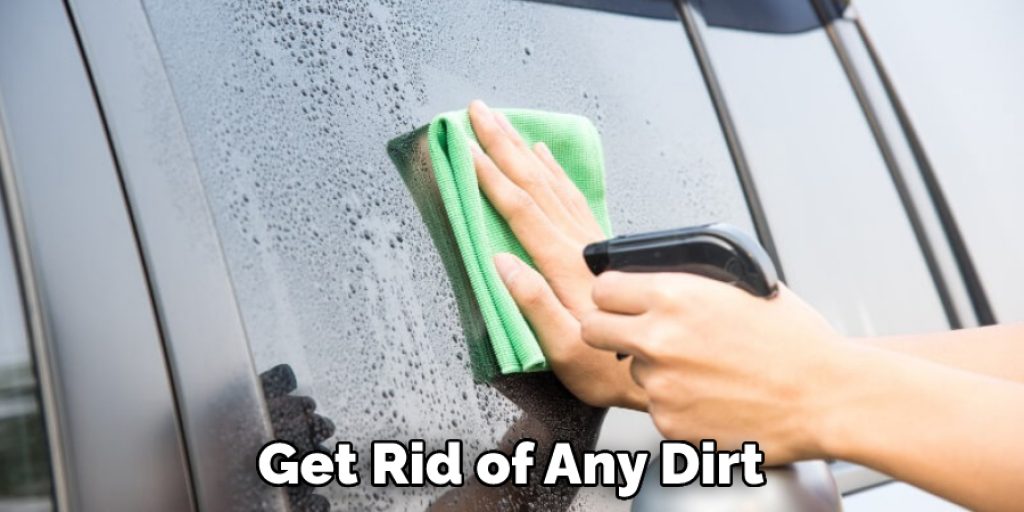
If you have any old tape already stuck to the window frame, use a razor blade or scraper to remove it. Although you will be covering the window with plastic wrap, it is important to make sure that the frame and glass are clean for a better fit.
9. Inspect Regularly for Wear and Tear:
It’s important to check your patch job regularly for wear and tear, especially if it has been exposed to windy conditions or bad weather. Be sure to replace any damaged areas as soon as possible. And if your plastic window wrap has begun to degrade, you may need to replace it altogether.
10. Get Professional Repair Work:
Once you have a plastic wrap patch in place, remember to get your car window professionally repaired as soon as possible. This will help ensure that your car remains safe and secure. Make sure to use a qualified technician who knows how to install your replacement glass properly. Additionally, this will also help you save money in the long run. Having a professional repair job done will also provide you with peace of mind knowing that your car window is properly sealed and secure.
By following the steps above, you can easily cover a broken car window with plastic wrap. Although this is not a permanent solution, it is a great way to temporarily keep out unwanted wind, rain, or snow until you can have proper repairs done. Be sure to inspect your patch job regularly for wear and tear and replace any damaged areas right away. And don’t forget to get professional repair work done when necessary!
You Can Check It Out to Fix a Squeaky Car Window
Can You Use Plastic Wrap to Cover Windows?
Yes, plastic wrap can be used to cover broken car windows. It is an inexpensive way to protect the interior of the vehicle from weather and debris until a more permanent solution can be found. The plastic wrap should be tautly secured around the edges of the frame, overlapping where necessary to keep water out.
For added protection, use duct tape to further secure the plastic wrap. Be sure to remove and replace the plastic wrap regularly, as it can become brittle after a few days in the sun and may no longer provide effective protection. Make sure that you also use plenty of tapes when securing the plastic wrap, as it will help keep it from blowing away in windy conditions.
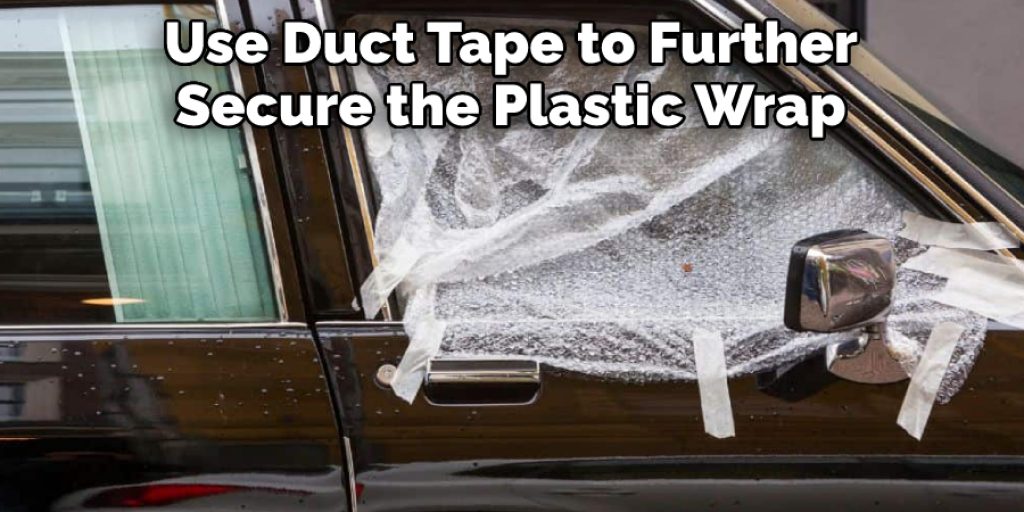
Conclusion
While this may not be the most aesthetically pleasing solution, covering your broken car window with plastic wrap is a quick and easy way to keep your car safe and secure until you can get it fixed. So next time you’re in a pinch, don’t forget that plastic wrap can come to the rescue.
We hope this guide on how to cover a broken car window with plastic wrap was helpful. Please share it with your friends on social media if you find it useful. And be sure to check back here soon for more informative guides like this one.


